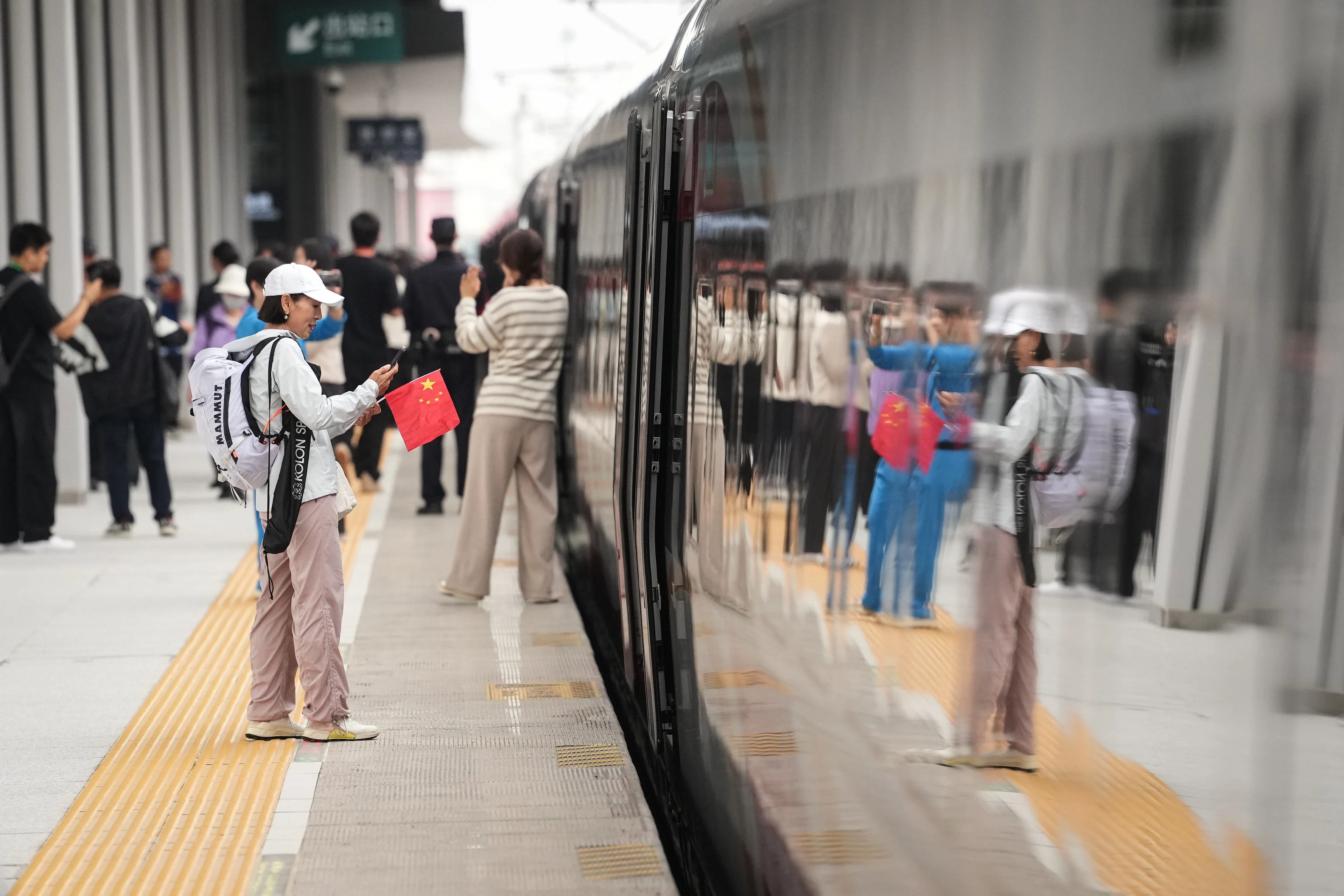By David Dodwell
Copyright scmp

Two hundred years ago on September 27, the age of the passenger train was born. Hundreds of passengers journeyed 26 miles from the coal mining town of Shildon in northeastern England through Darlington to the port of Stockton. George Stephenson’s steam-powered Locomotion No 1 carried them at 24km per hour, but its average speed on that historic journey was a little over half.
Today, the world is criss-crossed by hundreds of thousands of kilometres of railways, carrying around six billion tonnes of freight and seeing more than 20 billion passenger journeys per year, but until recently railways have been the Cinderella of transport, surpassed by massive container ships for freight and by the charisma of air travel for passengers.
Its history was of grimy freight trains, constant breakdowns and dramatic high-mortality crashes. In many parts of the world, it provided the poor man’s transport, with stiff wooden seats, unspeakably unsanitary toilets, aisles littered with the detritus of snacks – in China, I remember mostly sunflower seed hulls.
Nevertheless, I’m sure most of us have at least one romantic train journey story to cherish. As a young Financial Times journalist, assigned in 1982 to spend three months training newly minted China Daily journalists, I was spared just one long holiday weekend away from Beijing. My choice was simple: a 15-hour overnight sleeper train to see the terracotta warriors in Xian. Today, that journey from Beijing to Xian takes just four hours.
The sleek eight-car Fuxing high-speed trains that whisk you to Xian at a top speed of 450km an hour are part of a national 48,000km network that links Harbin in the far northeast to Urumqi in the far west, as well as Xishuangbanna down south, close to the Myanmar border. Nothing better encapsulates the miraculous transformations that have been engineered within China’s rail system.
For sure, Japan’s Shinkansen has also done a sterling job in making railway travel synonymous with speed, luxury and reliability. But China’s railway revolution is distinct and may prove unique. The transformation has unfolded in just 17 years. China’s first high-speed rail route, the 117km Beijing-Tianjin line, opened in 2008, and now bullets commuters between the two cities in 30 minutes.
Its passenger focus has transformed domestic tourism. Last year alone, more than 4 billion trips were taken. In contrast, the US rail system, the largest in the world, remains devoted to freight and logs barely 33 million passenger trips a year.
China’s high-speed rail revolution, which has cost the country hundreds of billions of US dollars, is not eliminating domestic air travel but reshaping it, according to Scott Zhao, an analyst with Cirium Ascend Consultancy.
Research points to “strategic differentiation” with high-speed rail dominating journeys under 800km and airlines remaining dominant on international routes and on journeys over 800km.
High-speed rail is not only cheaper but also saves a lot of time and hassle. According to the consultancy, railway stations are typically 10-15km from travellers’ homes, whereas airports are on average 25-40km away. High security at airports slows the process of getting on and off aircraft.
Trains have a reliable track record in China. I recall the unreliability of airline timetables back in the day. A three-hour journey by jet would, in practice, take longer due to delays, especially if the airport was hit by inclement weather, as was sometimes the case in northern China. The rail journey was on paper much slower, but it was at least always punctual, with convenient departures from and arrivals to major cities.
China’s high-speed railway revolution is also distinct compared to other countries, in part because of the obvious scale that comes from building a network that serves hundreds of cities. China has at least 65 cities with more than 1 million people, while Japan has 13, the United States 11, France six, the United Kingdom four and Spain two. Moreover, China’s increasingly affluent population of 1.4 billion has a growing appetite for travel.
Against China’s 48,000km high-speed rail network, Spain has built four lines amounting to 3,993km. Japan and France boast 3,147 km and 2,760km, respectively. Today, China accounts for more than two-thirds of the world’s high-speed rail infrastructure.
The UK’s HS1 line, which opened in 2007, has juddered to a halt at 109km. The US remains an outlier because its rail network has always focused on freight, while Americans love their cars and the convenience of air travel. One seems to hear more about Greyhound buses than Amtrak train journeys.
The final outlier is India, which has a large existing rail network of 68,000km and a population bigger than China’s, as well as at least 40 cities with more than 1 million people. Already, Indians take 8 billion train journeys a year. India clearly has the critical mass to build a high-speed network and while the country is working on one, progress has been slow in part due to a lack of investment and development.
So China appears to stand alone in its development of high-speed rail at scale. Apart from offering the potential for cheaper nationwide travel, it also brings massive environmental benefits: emissions from air and road transport are both significantly higher, so high-speed rail comes with a distinct green dividend. It is a pity China stands alone.



